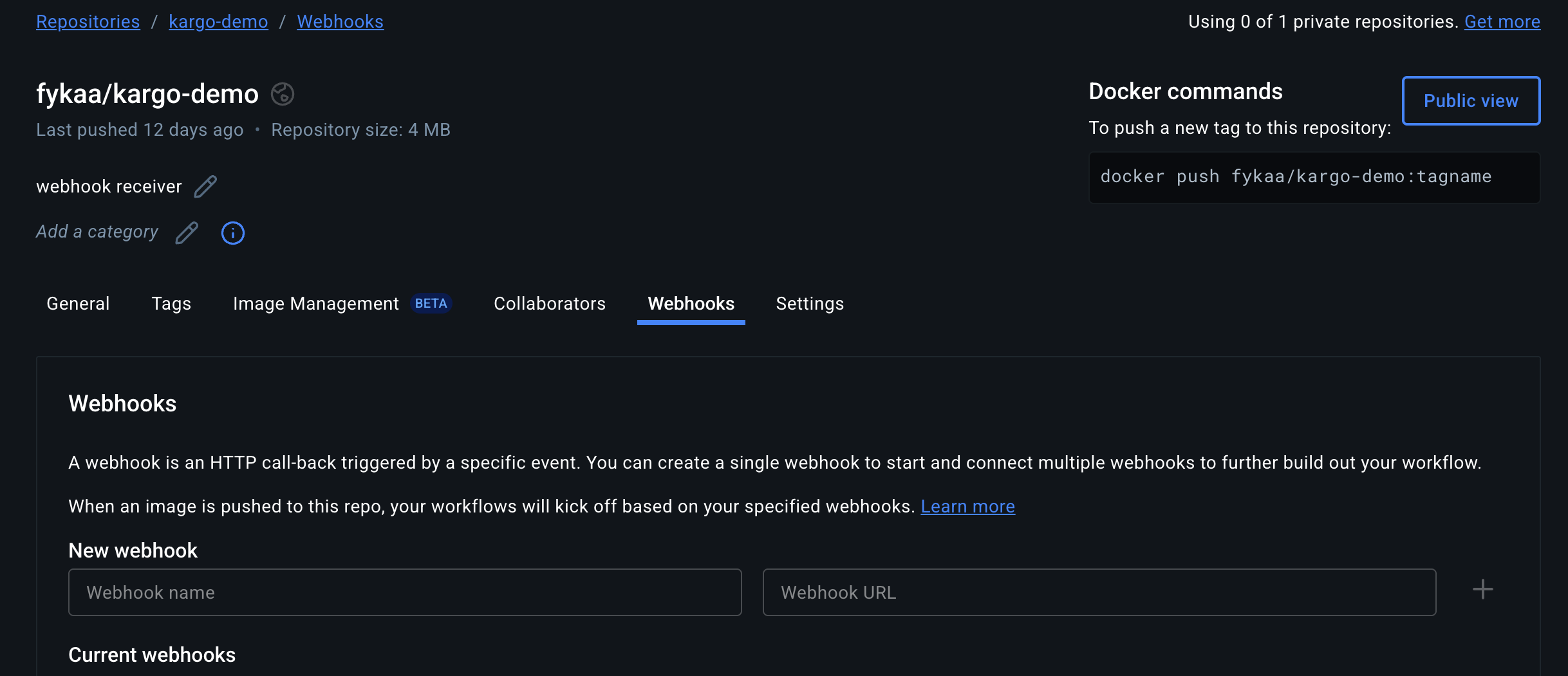Docker Hub Webhook Receiver
The Docker Hub webhook receiver responds to events originating from Docker Hub
repositories by refreshing all Warehouse resources subscribed to those
repositories.
"Refreshing" a Warehouse resource means enqueuing it for immediate
reconciliation by the Kargo controller, which will execute the discovery of new
artifacts from all repositories to which that Warehouse subscribes.
Configuring the Receiver
A Docker Hub webhook receiver must reference a Kubernetes Secret resource with
a secret key in its data map.
This secret will not be shared directly with Docker Hub.
Docker Hub does not natively implement any mechanism whereby receivers may authenticate inbound webhook requests. To compensate for this, Kargo incorporates the secret into the generation of a hard-to-guess URL for the receiver. This URL serves as a de facto shared secret and authentication mechanism.
The following commands are suggested for generating and base64-encoding a complex secret:
secret=$(openssl rand -base64 48 | tr -d '=+/' | head -c 32)
echo "Secret: $secret"
echo "Encoded secret: $(echo -n $secret | base64)"
apiVersion: v1
kind: Secret
metadata:
name: dh-wh-secret
namespace: kargo-demo
labels:
kargo.akuity.io/cred-type: generic
data:
secret: <base64-encoded secret>
---
apiVersion: kargo.akuity.io/v1alpha1
kind: ProjectConfig
metadata:
name: kargo-demo
namespace: kargo-demo
spec:
webhookReceivers:
- name: dh-wh-receiver
dockerhub:
secretRef:
name: dh-wh-secret
Retrieving the Receiver's URL
Kargo will generate a hard-to-guess URL from the receiver's configuration. This URL can be obtained using a command such as the following:
kubectl get projectconfigs kargo-demo \
-n kargo-demo \
-o=jsonpath='{.status.webhookReceivers}'
Registering with Docker Hub
To configure a single Docker Hub repository to notify a receiver when objects (like container images or Helm charts) have been pushed to it:
-
Navigate to a Docker Hub repository for which you are an administrator.
-
Select the Webhooks tab.

-
Complete the New webhook form:

-
Enter a descriptive name in the Webhook name field.
-
Complete the Webhook URL field using the URL for the webhook receiver.
-
Click +.

-
-
Verify the new webhook appears under Current webhooks.
If you'd like to review outbound webhook requests for troubleshooting purposes, select the three dots to the right of a webhook, then select View history from the context menu.
When these steps are complete, the repository will send events to the webhook receiver.
For additional information on configuring webhooks, refer directly to the Docker Hub Docs.